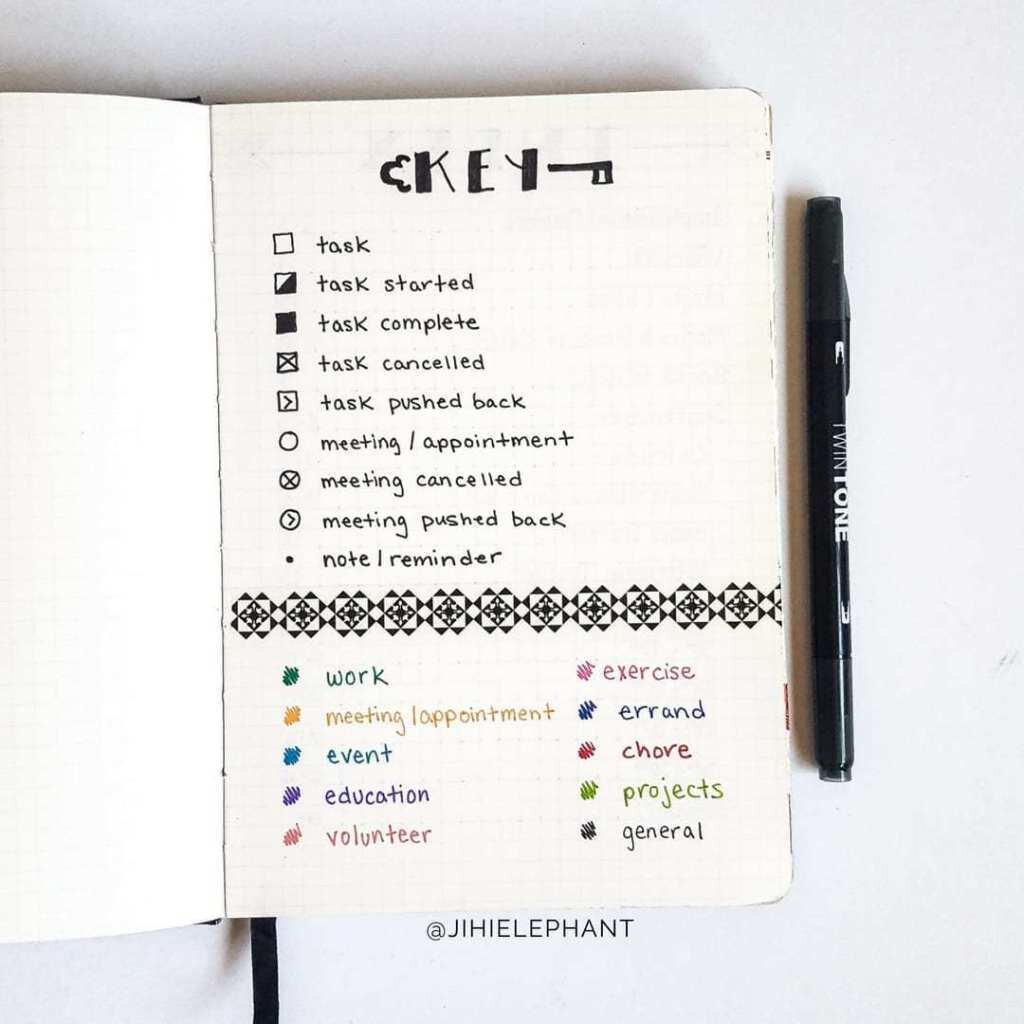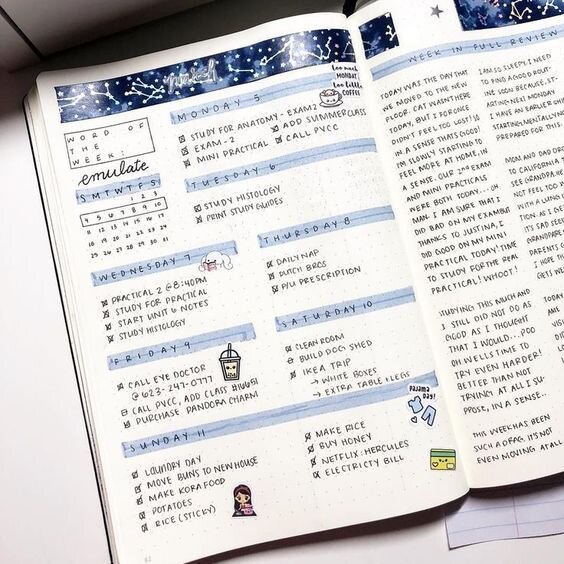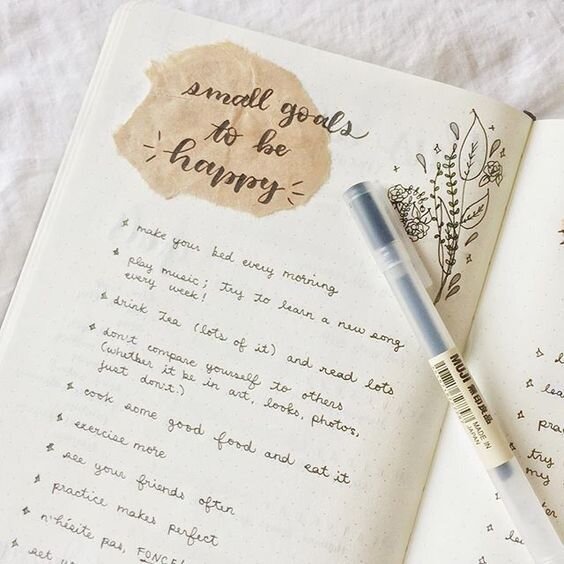Bullet Journaling for Beginners
When I first came across bullet journals on Pinterest, I thought it looked like a lot of work when I could just buy a planner from the store. But something still intrigued me about them, and a few months later I’m a total bullet journal devotee! I want to share this bullet journal guide with you so that you can start your own creative planning journey.
What is bullet journaling?
Bullet journaling is a personal organization system created by Ryder Carrol, a New York-based designer. Ryder wanted the bullet journal “to help you track the past, organize the present, and plan for the future.” It’s such an effective system because it allows each person to express their creativity while keeping track of personal and professional goals. Think of it as a planner, but better tailored to your specific goals and ideas.
Why start bullet journaling?
When I first started out, I realized that bullet journaling is a super versatile organization system -- you can use it as a calendar, task manager, planner, journal, daily to-do list, sketchbook, habit tracker, and so much more! The beauty of the bullet journal is that it can be used for anything you want.
Bullet journaling might be right for you, too, if:
You like writing things down, rather than typing them out or recording them
You are looking for a new hobby that is also productive
You are searching for a new creative outlet
You are intrigued by the beautiful planners you see on Pinterest and you just really want to try it out!
If you’re interested in starting a bullet journal, I recommend watching the official bullet journaling guide, which Ryder created to help others understand the bullet journal system in general.
What makes bullet journaling so effective?
Bullet journaling frees up mental space so you can think more clearly and concentrate better. You don’t have to waste valuable energy remembering everything. Instead, you can be more present and at ease in the moment without worrying that you’re forgetting something.
Plus, as an analog productivity method, bullet journaling allows for better retention over digital tools. Research shows that writing by hand engages multiple senses -- visual, kinesthetic, and tactical -- which helps commit tasks to memory. It also signals to your brain that your goals are important, making you more likely to follow through!
Bullet journaling is also powerful because it’s a place where you can reflect on your accomplishments and happy moments. Research shows that taking time to self-reflect, appreciate what’s going well, and create a vision for your future boosts well-being. I love using bullet journaling to hold myself accountable to my self-care goals!
Ready to get started? Keep reading to learn how to set up your own bullet journal!
How to Start a Bullet Journal
A Step-by-Step Guide
Setting up your bullet journal is easy! You only need two supplies: a journal and a pen. If you’re feeling creative, you can gather some basic art supplies like markers, highlighters, stickers, a ruler, or decorative washi tape.
1. Brainstorm Your Pages
Think about what you want to use your bullet journal for. You can use your journal for one specific reason or as a multipurpose planner. There are so many ways to use your bullet journal, so it might be a good idea to find inspiration on the many different bullet journal layouts and spreads that interest you. Most people use a bullet journal as a planner and then add in extra pages (challenges, trackers, designs/doodles, quotes, etc.) throughout the journal itself.
2. Set Up Your Pages
Every bullet journal has a few basic layouts. These pages help ensure your journal is the most effective and efficient planner it can be. Below are some bullet journal pages with step-by-step instructions on how to create each one!
Start with an index.
The index page is simply a table of contents for your bullet journal. To make an index page, begin by numbering your pages so that you have a point of reference to start with. Then, decide on the order you want the pages to go in and then fill them into your bullet journal. Alternatively, you can create the index later. Just leave the first one or two pages blank to come back and fill in.
Image source: @jihielephant
Next, create your bullet journal key (aka signifiers).
The key is the legend of what different symbols will mean in your bullet journal. Ryder created some standard keys to represent different things, so feel free to reference his guide for ideas!
Image source: @jihielephant
Then, plan your future log.
The future log is a summary of your upcoming year over two pages. You can list all the big events for the year, including:
Monthly goals
Important events
Birthdays of friends and family
Important deadlines
Important annual medical appointments
Major exams (GRE, LSAT, MCAT, SAT)
There are a ton of future log design ideas out there, so go and find some that inspire you or design your own! Pinterest is a great place to start -- just type “bullet journal future log” into the search bar.
Image source: Masha Plans
For each month, create a monthly spread.
Your monthly spread is a snapshot of your upcoming month. Create a monthly calendar and a place to track things like goals for the month, important deadlines, upcoming events, notes, or personal mantras! You can also add aesthetic elements like drawings, stickers, and other designs. I love scrolling through “bullet journal monthly spread ideas” on Pinterest when I’m planning my upcoming month!
Image source: The Curious Planner
Image source: Angel Agiles
Image source: Masha Plans
Set up your weekly or daily spread.
To break your month down into a seven-day focus, you can set up a spread for each week in the month. In the weekly spread, you can keep track of the most important tasks for the week, your goals for the week, and any events, appointments, or reminders you'd like to keep readily available.
Alternatively, you could also use a simple daily log page and track your to-dos and activities one day at a time. Some BUJO users believe the daily spread is redundant and the weekly spread can cover all your daily log needs. Of course, that belief is entirely subjective and dependent upon your organization needs. If you have a lot of daily activities or want to use your bullet journal as a dairy, then the daily spread is probably a great option for you.
The daily/weekly spreads are my favorite because you can get super creative with your layouts and designs for every week!
Image source: Crazy Laura
Image source: Joanna Rahier
Image source: Slightly Sorted
Create some collections pages.
Collections are all the other unique pages that you might want to include in your bullet journal. Here are some common ideas for you to use as inspiration:
Goals for the year
Brain dump
Photo or song of the month
Mood tracker
Habit tracker
Sleep tracker
Health and fitness trackers
Gratitude log
Budgeting and saving trackers
Books to read
Recipes to make
Movies/TV shows to watch
There are a ton of collection design ideas out there, so find some that inspire you or design your own! This is one of my favorite parts of bullet journaling, because collections pages allow you to personalize your bullet journal to reflect your goals, dreams, and ideas!
Image source: Rae’s Daily Page
Image source: Shihori Obata
Image source: Shihori Obata
Image source: Shihori Obata
Image source: Shihori Obata
3. Have fun with your new bullet journal!
Now that you’ve set up your bullet journal, go have fun with it! Your bullet journal can be a fluid and ever-changing creative outlet that also serves functional organization purposes. Don’t worry if you make some mistakes or if your journal doesn’t look exactly like the inspiration photos you see — after all, the personal touches are what makes it uniquely yours!
Will you start bullet journaling? Let us know in the comments below!














